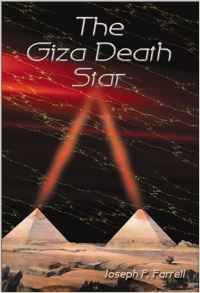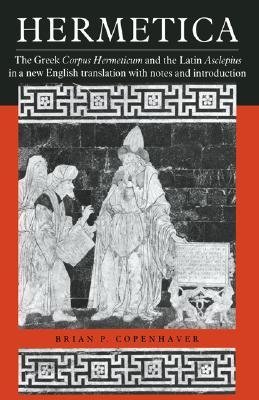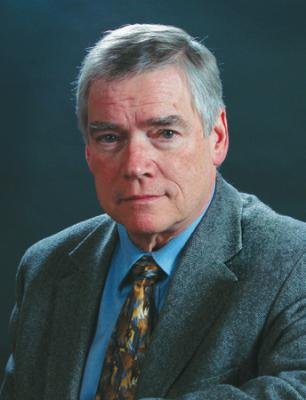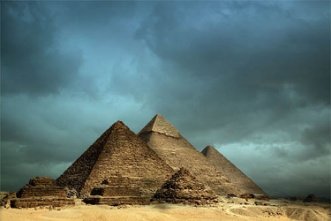Book Review: The Giza Death Star

Dr. Joseph P Farrell completes a tour de force with his first book The Giza Death Star, published in 2001 by Adventures Unlimited Press. This was his first book, though it's the fourth that I've read. All I can say is that I wish I had read this one first. It lays the groundwork for his entire catalog of works on alternative history, science, and finance. Reading the first three books was an amazing and enriching experience, but would have been even more so with the principles he lays out here first.
As stated in my previous reviews of his work here on Steemit, Dr. Joseph P. Farrell is arguably the most important non-fiction writer alive today. The breathless scope of research he has done and shares in his books unveils the hidden knowledge most critical to our day. From lost hyper-dimensional physics to hidden systems of finance and underground fascist networks, Farrell provides the insight and wisdom we need to understand what is going on in these pivotal times and reformulate our world views.

To review for the reader, Farrell has meticulously mapped out his books and their interconnections. As such, he recommends his books be read in a particular order to get the most out of them, though it is hardly necessary since all stand solidly on their own. The recommended order taken from his website is:
- The Giza Death Star
- The Giza Death Star Deployed
- Reich of the Black Sun
- The Giza Death Star Destroyed
- The SS Brotherhood of the Bell
- The Cosmic War
- Secrets of the Unified Field
- The Philosophers' Stone
- The Nazi International
- Babylon's Banksters
- Roswell and the Reich
- LBJ and the Conspiracy to Kill Kennedy
- Genes, Giants, Monsters and Men
- The Grid of the Gods, with Dr. Scott D. de Hart
- Saucers Swastikas and Psyops
- Yahweh the Two-Faced God: Theology, Terrorism, and Topology, with Dr. Scott D. de Hart (Amazon Kindle e-book)
- Transhumanism: A Grimoire of Alchemical Altars and Agendas for the Transformation of Man, with Dr Scott D. de Hart
- Transhumanism: A Grimoire of Alchemical Altars and Agendas for the Transformation of Man (with Dr. Scott D de Hart, 2012)
- Yahweh the Two-Faced God: Theology, Terrorism, and Topology (Lulu Print-on-demand book, 2012)
- Covert Wars and Breakaway Civilizations: The Secret Space Program, Celestial Psyops, and Hidden Conflicts (2012)
- The Financial Vipers of Venice: Alchemical Money, Magical Physics, and Banking in the Middle Ages and Renaissance (2013)
- Covert Wars and the Clash of Civilizations: UFOs, Oligarchs, and Space Secrecy (2013)
- Talk Radio for the Eyes: Transhumanism in Dialogue; with Dr. Scott D. de Hart (2013)
- Thrice Great Hermetica and the Janus Age: Hermetic Cosmology, Finance, Politics
and Culture in the Middle Ages through the Late Renaissance (2014) - The Third Way: The Nazi International, The European Union, and Corporate Fascism (2015)
- Hidden Finance, Rogue Networks and Secret Sorcery: The Fascist International, 9/11, and Penetrated Operations
The Giza Death Star is basically an exposition of Farrell's hypothesis that an ancient "Very High Civilization" once thrived on earth (and possibly on other planets in the Solar System). The Great Pyramid of Giza is one of its remnants, and, perhaps, one of the reasons for its demise. He builds his argument by taking us on a mind-blowing trip through science and history to present the evidence. He makes reasonable inferences and is honest about speculations when he does it, but it's all supported by the evidence at hand and/or modern analogs.
Farrell begins by introducing us to historical and scientific anomalies that, while not unknown, are often ignored or explained away in terms stranger than the anomalies themselves. He draws links between cultures and religions that archaeologists tell us don't exist, but are nevertheless brazenly obvious, even to casual observers. He examines languages that give linguistic clues to this ancient Very High Civilization with bizarre but intriguing results you can file under things that make you go hmmmmm.
He then moves onto the archaeological evidence which he calls "An Archaeology of Mass Destruction." The evidence is there, in the archaeological record, for all to see, of a global cataclysm that struck civilizations from the Indus to the Andes. Farrell doesn't have to speculate on anything here. His targets are all well-known to science and represented in the literature. Massive clues to unspeakable destruction are in the record for anyone who has eyes to see. He even examines the work of Richard C Hoagland that points to clear evidence of such civilization-wide destruction in the monuments of Mars.
This trip is brief. Farrell is only establishing the background and context of the grand thesis that lies ahead. Powerful hints of his thesis have appeared before we should know about. Yet he's careful to explain in some detail why they are important and give credit to the researchers that preceded him. For Farrell to respect these researchers says a lot since he is a masterful researcher himself having earned a PhD from Oxford University.
One of these clues Farrell takes time to examine in some detail is the ruins of the ancient cities of Indus Valley civilizations like Mohenjo-Daro. Here there are frightening indications these cultures may have been destroyed in a thoroughly devastating nuclear war. People seemingly dropped dead in the street going about their daily affairs. The sites have unusually high radiation readings. And most compelling of all, they are covered with vitrified soil--dirt that has been turned into glass. Any student of atomic or nuclear weapons will be familiar with this effect from the very first atom bomb test in New Mexico to other test sites around the world.

After establishing the context of well-known anomalies and archaeological evidence, Farrell then launches his barrage. He begins by diving into the textual evidence for this paleoancient Very High Civilization. He's rides the shoulders of giants, but sees further and then hops off to go there. We are given new looks at and analyses of the work of Zechariah Sitchin (perhaps not so poo-pooable after all), the Hermetica, Graham Hancock and Paul LaViolette. Farrell shows convincingly how so many texts were not just so many myths invented by ancient peoples engaging their ignorance and superstitions. In fact, he demonstrates how these texts may in fact be relating historical events in the lost history of Mankind. He also shows how it was the effort of the paleoancient Very High Civilization's legacy civilizations'--Egypt, Sumer, Greece, etc.--attempt to record and preserve knowledge they did not fully understand. In their tragically declined states, these people only had the language and belief systems to create myth-like stories and mysticism around scientific principles, or paleophysics as Farrell refers to it, that were left behind by their more advanced predecessors.
He picks through very revealing details of the Mesopotamian stories to show how they couldn't possibly be just made-up tales of a creation myth. There are too many specifics, too many technical descriptions and details. Instead, these were much more likely Mankind's effort to record and preserve, for the first time in writing, the history of the paleoancient Very High Civilization after preserving it for millennia as oral tradition in post-cataclysm primitive societies.
He then delves into the Hermetica, and ancient text ascribed to Thoth by the Egyptians but known today only through its Greek and Latin translations. In it, he finds curious and even astounding analogs with the most esoteric and advanced physics of today. In short, the Hermetica was not so much a treatise in mysticism or religion, but a treatise on physics, the paleophysics that powered and enriched the Very High Civilization Farrell hypothesizes must have existed.

This section of the book is deep and detailed. It requires a fast and flexible mind to get through. It challenges your best ability as a lateral or analogous thinker, but it is also rewarding. In fact, despite the subject matter of history, mysticism and physics, it touched me in a deeply personal way, for I finally understood better how my own mind and intellect worked having to follow his elucidating analysis. Light bulbs started going off in formerly dark corners of my mind and lightning bolts ignited great plasma balls of illumination. My brain sizzled and sparked as if on acid as the self-illumination glowed and became brighter. I know understood better, by orders of magnitude, why my thinking and world view is so vastly different than the rest of the world.
Farrell then takes us on an interstellar, galactic spaceship tour of the most esoteric physics. This is what makes science interesting! Dr. Farrell re-examines the work some of the greatest physicists known to Man, while also exploring some of the best "alternative" literature. He relies on work by the aforementioned Paul LaViolettle as well as Stan Deyo, Nick Herbert, Michio Kaku, Tom Bearden, and, of course, Tesla, among others. The who's who and who did what of physics is too extensive to list completely. Just think of the greatest minds in quantum theory who have ever lived and then some. The VIP list is impressive, and so is how Farrell connects their work. He shatters the dogma of modern physics, at least as it is publicly presented, and builds a new paradigm that will surely replace the current one in the not-too-distant future.
Ether, plasma cosmology, the Anthropic Principle, non-locality, entanglement, scalar interferometry, and nonlinear optical phase conjugation are all on the menu. We feast on the sonoluminesence effect, HAARP, von Neumann's time locks, and a curious study of sunspots by RCA. Farrell accomplishes a lot in this chapter. He not only makes it palatable to laymen, but creates a whole new vision of how the Universe works by putting all these pieces of the puzzled together, perhaps for the first time. But he goes further--he doesn't just create a theoretical framework or hypothetical possibility. He shows how these physics are practical and engineerable. And gives concrete, real world examples. These are the physics that have analogs in the "religious" texts studied in the first part of the book, this time with very compelling and even earth-shattering insight.
For those interested in the math underlying all his assessments, he points you to the sources, avoiding them only because a lot of his readers may not be mathematically inclined.
After laying the foundation with his historical/archaeological evidence and re-introducing the reader to physics, he goes on to make his case for the title of the book--that the Great Pyramid was the Giza Death Star.
Again he relies on groundwork laid by great thinkers like Christopher Dunn, a real life engineer and defense contractor who made the first ironclad case that the pyramid must be some kind of machine and could not have been built by the ancient Egyptians.

Dunn's engineering qualifications led him to some baffling observations of the pyramid that then led to an extensive and detailed survey. Conclusion? It is some kind of harmonic oscillator. Dunn even speculates on the missing components. That's all well and good, but what makes it so compelling is that he comes to roughly the same conclusions as Sitchin by taking a completely different path and without any apparent knowledge of Sitchin. This is not surprising--being a grounded, hard-nosed engineering type, it is not likely Dunn would have been drawn to the work of a new-agey, UFO-y guy like Sitchin prior to undertaking his study of the pyramid.
But then Farrell gets down to brass tacks and shows that as brilliant and insightful Dunn's machine hypothesis is, it doesn't go quite far enough. So Farrell careens full speed ahead into the details of the Death Star, how it probably worked if in fact it was the weapon he supposes, and what the missing components were that were overlooked in Dunn's masterful book The Giza Power Plant.
Farrell tells us exactly how thinks the Giza Death Star could have worked by combining Dunn's insights, the physics he elucidates in the third part of the book, and adding new information. It's astounding how he describes in detail how each part of the pyramid and surrounding structures served to create a massive non-locally entangled, cosmically-powered harmonic oscillator capable of unimaginable energy output and unthinkable destructive power.
In this book, the reader can clearly see the seeds being planted for the books that followed. In the history, religion and mysticism is the seed that sprouted into the financial thread. In the physics is the thread that sprouted into the Nazi thread. The book itself seeded the Death Star thread. Hybridize these seeds and you get the cosmic war and breakaway civilizations thread.
But perhaps they aren't merely threads. Maybe they are more like strings, and this is the book that gave birth to Joseph P Farrell's "string theory" of Humankind. This book was an utterly fantastic read.


Farrell is a treasure. I pay close attention to his analysis
Thank you :)
Downvoting a post can decrease pending rewards and make it less visible. Common reasons:
Submit